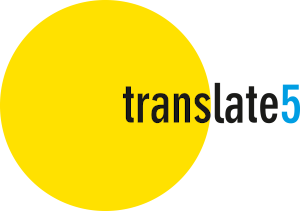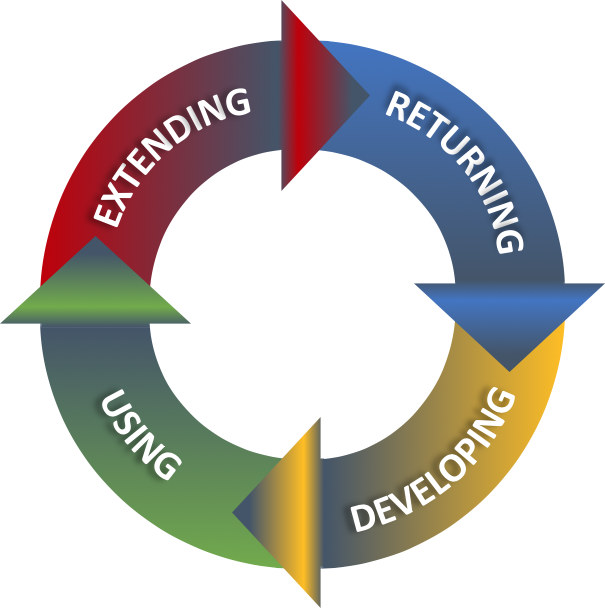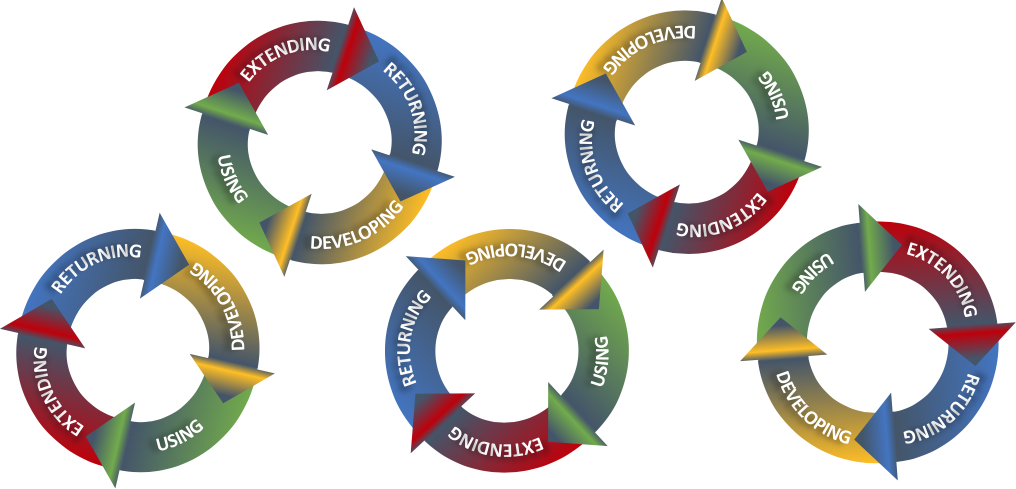Mission
By the language industry, for the language industry
The mission of translate5 is the continuous community-driven development of its open source, cloud-based translation management system for the language industry.
Realizing the translate5 mission
1. The four process elements of translate5’s software development
translate5’s mission is realized via a continuous cycle of development and improvement. It describes the translate5 business model, which consists of the following four process elements:
1. Develop
translate5’s development is the fruit of a collaboration between professionals. We work together as translation experts, language researchers and translation software developers who are aware of the specific requirements for a translation tool. Communicating and discussing our expectations with each other has meant that our respective particular requirements could be met and realized as a cloud-based TMS. This process is led and organized by MittagQI, the lead development company spearheading the majority of development work behind translate5. MittagQI coordinates the road-map together with the community and ensures good architecture and a high quality of code.
2. Use
3. Extend
- Spreading the idea of an open source, cloud-based TMS
- Giving feedback to our developers
- Funding features
- Contributing to documentation
- Developing plugins
- Contributing to core development
- Supporting translate5 through ongoing funding
The aim of translate5 is to give all users control over the development of their own software in a way that is relevant to them. Therefore, all users are allowed to extend translate5 to meet their own particular requirements. This opportunity is granted because open source is the conceptual foundation of translate5 and forms the flexible, extendable architecture of its system.
4. Give back
Want to find out more?
How can we drive translate5 forward together?


